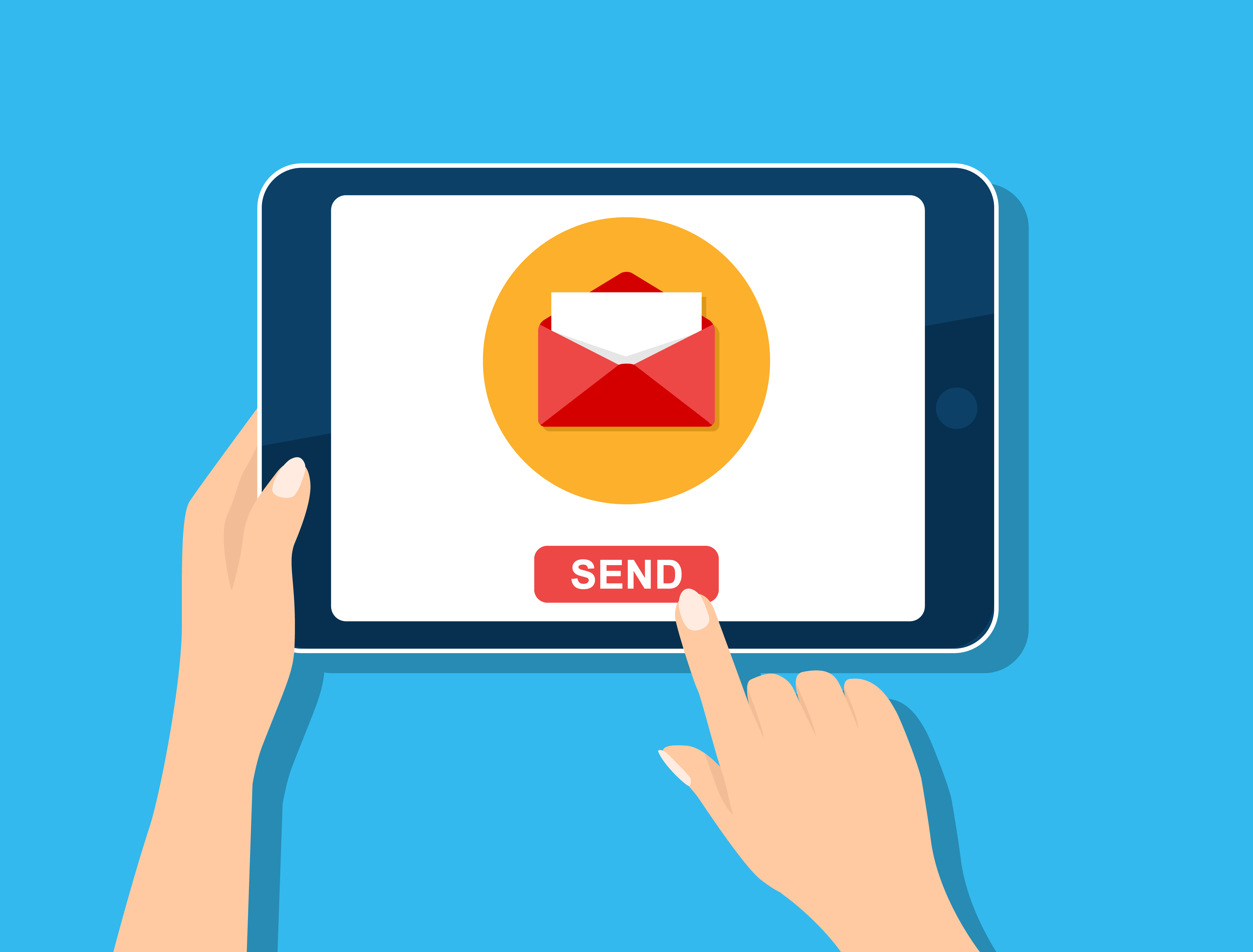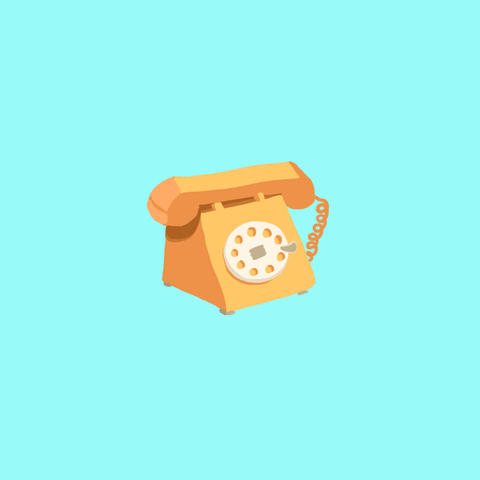You’ve chosen and qualified your large or enterprise company prospect. You’ve landed the first meeting, and you generally know what to expect from it. You’ve mentally prepped, and you’re dressed the part.
You’ve done a lot. High five!
Now comes the nitty gritty of running that first meeting.
This might feel like the hard part to you — but let me reassure you. This is the really fun part.
Now you get the opportunity to share your knowledge, get to know the prospect more personally, and really start to be a helpful resource to them.
Buckle up. In this article, we’re going to cover the basics of how to structure and run the first meeting with a prospect from a large organization.
Should I bring examples or prepare a formal presentation?
I’m going to get much deeper into this throughout the rest of this article, but I wanted to address this question quickly up-front because it’s the one people seem to get most nervous about.
Yes, you absolutely should come to your meeting prepared with as many examples as you can of how your product or service has helped your customers.
And yes, you should have a formal presentation on-hand — but that doesn’t mean you should use it. If the customer indicates they’re interested in a more informal meeting, keep your presentation for another time.
How do I structure the meeting?
More than likely, in the first meeting you’ll meet with just a single person — but there are exceptions. And you need to prepare for both scenarios because it's not unusual to meet with a small group even if the calendar invitation just has you and your prospect listed on it.
In the first scenario — meeting with one person — you should be prepared to roll with the style of that person. If they’re chatty and warm, you should run the meeting in a more casual, conversational way. If they’re more serious and direct, it’s time to pull out your prepared presentation.
Most importantly, you must pay attention to the person you’re meeting with. Read them. Assess their reactions and responses. Learn as much about their business problem as possible. Tailor your meeting to the customer in a way that will help you form a connection with them.

Yes, it is hard. But you're a small business owner so you're already good at hard things!
Meeting structure should not be rigid. It should be flexible and fluid, and you should adjust it depending on the personal style of the person you’re meeting with.
In scenario two — you’re meeting with a group of people — it’s pretty likely that your prospect has already been looking for your product or service, and they’ve already begun allocating the resources to make the purchase so they want input and/or assessment from their colleagues. Congratulations! This is a rare case, but you’re in a great position.
The reason you end up meeting with multiple people when the organization is already prepared to buy is because you’ve already jumped the first hurdle. You’ve gotten initial buy-in from the prospect you spoke with, and that person has begun championing you within the company. Now they’re introducing you to the team.
It might feel intimidating to be in front of a group of people around a boardroom table — but DON’T LET THIS BE A SOURCE OF STRESS. You’re in the best possible scenario, here. This group is going to want to tap your expertise as quickly as possible…and they probably won’t waste a lot of time on small talk.
If you’re meeting with a group of people, you can comfortably get to talking about your area of expertise almost straight away.
What will they be expecting from me?
In my article on mentally preparing for your first meeting with an enterprise client, I said you don’t have to worry about selling anything except yourself. You don’t have to worry about making a formal offer. I stand by that.
BUT.
You do need to have at least the outline of an offer in mind. Something the prospect can get their head around easily.
I recommend this cadence:
- Get your bearings.
- Present examples.
- Frame up an offer.
1. Get your bearings
Ask questions of your prospect and then listen intently to their answers. Figure out what their business problem is and what impact your solution can deliver.
This information will serve you in myriad ways — including figuring out what examples to share in Step 2. Just make sure the questions you ask are relevant to your line of business and show the prospect you’re interested in getting to know them.
For example, when I’m selling Showcase Workshop to a large organization, I ask lots of questions around sales and marketing (e.g. questions around what kinds of campaigns they are working on at the moment, how they communicate those to their staff/team and what kinds of complementary sales and marketing tools they use).
2. Present examples
Present examples of how you’ve helped other customers solve problems similar to the one your prospect is talking about.

Use what you learned in Step 1 to determine which examples will have the most impact on the prospect, and best convince them that you can solve their problem.
If you don't have lots of customer example to draw from, find a way to draw a relevant connection to the customer examples you do have. You'll get really good at this over time!
3. Frame up the offer
If you aren’t ready to present a specific offer, then present a general concept of how you think you might best work together.
This is all much easier if you sell a product, of course. I, for example, have a product called Showcase Workshop. It has a specific cost, time to implement, onboarding process, etc.
My presentation usually covers the amazing things our customers have done with Showcase, the results they’ve achieved, and the improvements they’ve seen in their businesses since they began using the product — and it’s easy to bring the conversation back around to my product. The offer is clear and unchanging.
If you sell a service, though, things can be a little more indefinite. Different projects can have different costs and timeframes. This makes the offer a little harder to frame up — but it’s not impossible. You just have to be a bit more creative.
Like when you’re selling a product, it’s best to spend some time talking to your prospect about how you’ve helped other clients with similar problems. Talk about the projects you’ve worked on and the results you’ve helped your clients achieve. (Obviously, pick examples that are most relevant to the prospect you’re talking to!)
Now, because you don’t have a product to bring them back around to, this is a great time to pull out a portfolio of projects. I realize this is very “meta,” but this is in fact one of the ways our customers use the Showcase app. As a mobile sales toolkit, it’s the perfect way to create and present a digital portfolio of work on the fly.
Should I leave something behind?
Yes. You should always leave something behind. But it doesn’t have to be a physical item.

A lot of salespeople feel like they have to leave behind a brochure or a business card. In our experience, those paper assets end up in the trash — not in the prospect’s long-term memory.
Heck, we started a whole charitable program to lessen the impact of these wasted paper assets.
Be creative with what you give or send the prospect after the first meeting.
Personally, I use the Showcase app to send follow-up material. I like using our own tool for this not just because it illustrates the product I’m trying to sell, but because the built-in analytics will show me if and when the person opened the content I sent them.
Typically I’ll send a relevant case study, an offer of a free trial, or an invitation to a live demo with me or one of my team members. Sometimes I’ll send a testimonial slide with customer quotes from other large organizations who work with us. (That’s a great credibility booster.)
Whatever you decide, make it enough to remember you by and it’ll be an anchor point for a follow-up call.
Do I schedule another meeting at the end of the first meeting?
After a good meeting, you should easily be able to schedule a next step of some sort. This might mean another in-person meeting, or it might mean a phone call, an opportunity to present a proposal for services, or a meeting with a broader group inside the organization.
The key is to have something to follow up about.
Sending an asset to your prospect like I recommend above is a great touchpoint for follow up. You can simply reach out and ask if they had the chance to review it yet, and ask if they have any questions about it.

Better by far, though, is if you can follow up with something that will help them solve their problem.
If you asked the right questions during the first meeting, you came away with a greater understanding of the prospect’s business problem. After the meeting, when you’ve had the opportunity to ruminate on what you heard the client say, you’ll probably come up with more specific information or even a specific solution that can directly benefit your prospect. Reach out with that, and you’ll have a willing audience.
For example, I might follow up with a prospect like so: “During our meeting last week, you mentioned that it's really difficult to keep your field sales team up to date with the latest product and pricing information. Another client of ours had a similar problem, and here is a case study showing exactly how they solved the problem using Showcase Workshop.”
You’ve Mastered the Meeting…Almost
Now you have a solid idea of how to structure your first meeting with a prospect from a large or enterprise company. This is such a huge topic, though, that one article isn’t going to do it justice.
In my next article in this series, I’m going to talk about what to say — I mean, the actual words you should use and NOT use — when you meet with prospects and clients from larger organizations.
Read the next article in the Small Fish, Big Fish series: Words of Wisdom: What to Say (and NOT Say) in an Enterprise Sales Meeting
Read past articles in the Small Fish, Big Fish series:
- What's the big deal about working with big companies?
- 3 Steps to Choose and Qualify Your Large and Enterprise Leads
- How to Land the First Meeting With Your Enterprise Lead
- What to Expect in Your First Sales Meeting With a Big Lead (Surprise! It’s Not a Sale)
- The New Sales Pro Dress Code
Or get the whole series in my free e-book, Small Fish, Big Fish: A small-business guide to selling to large and enterprise companies.